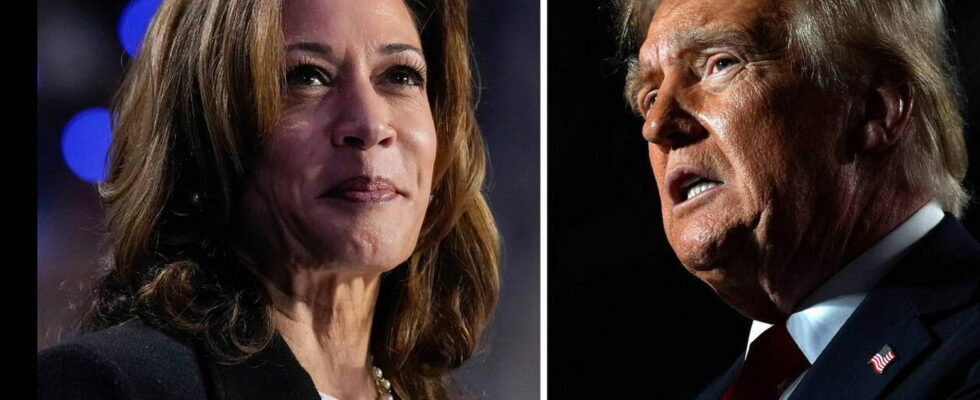The US presidential election ends in three days and it is impossible to know in advance who might win. Polls show Kamala Harris and Donald Trump neck and neck, raising the possibility of a perfect tie.
The essentials
-
The US presidential election will take place on November 5, but nearly 65 million Americans have already voted in advance.
-
The latest polls show Kamala Harris and Donald Trump neck and neck. They only have three days left to convince as many Americans as possible for this election which could well be decided by a few thousand votes.
-
The two candidates are holding meetings in swing states, which have the capacity to swing the election.
Live
1:18 p.m. – “I want your damn vote” says Donald Trump
During his rally in Wisconsin on Friday evening, Donald Trump urged Americans to vote for him. While the vote seems closer than ever, every vote counts. “I don’t want a money vote, I want your damn vote. Ok?” insisted the Republican candidate. He continued personal attacks on Kamala Harris, accusing her of having a “low IQ” and of “hating” Americans.
12:57 – Possible Russian interference in favor of Trump
Russian Foreign Minister Sergei Lavrov made a statement that could be in favor of Donald Trump. He assured, in the Turkish daily Hürriyet that “under the current president, who has pushed the spiral of Russian-speaking in the United States to the end, our countries are on the verge of a direct military conflict.” A statement that could scare undecided Americans and who would therefore be tempted not to vote for the Democratic camp. The Russian minister nevertheless warns that Russia has “no preference” between Harris and Trump: “At the time, the Trump administration had adopted the greatest number of anti-Russian sanctions compared to its predecessors.”
12:20 – What does the Constitution provide in the event of a tie?
The perfect tie between two candidates for the White House already occurred in 1800. The situation was very different today, the electors were fewer in number and did not vote in the same way, but the article by the Constitution which refers to this possibility has not changed. In 1800, Thomas Jefferson received as many votes as Aaron Burr. It is the members of the House of Representatives, equivalent to the National Assembly in France, who have a decision. After 35 rounds of voting which did not give an absolute majority, it was Thomas Jefferson who won.
For this election, it is still the House of Representatives which should decide. They would be brought together as a delegation from the 50 states, which makes the Republicans weigh more heavily than the Democrats. Indeed, the latter conquered a larger population, but in very populated states. The Republicans have 26 of the 50 delegations. In addition, it is in the Senate that the vice-president would be chosen. Although the Democrats are in the majority for the moment, the November 5 election could change everything. In the event of a perfect tie, Donald Trump would have a better chance of reaching the White House.
11:45 – How does the electoral system work?
The President of the United States will be elected by indirect universal suffrage. Americans will vote for electors who will choose the future tenant of the White House. There are 538 electors. To win the election, you must have an absolute majority of 270 votes. As it stands at the moment, the election could give Kamala Harris and Donald Trump 269 electors each. A situation that is unlikely to happen. According to a calculation by site 538, there is a one in 300 chance that this scenario will come true.
Read also
What you need to know
Each of the country’s 50 states represents a certain number of electors; the more populated the state, the greater the number of electors. It is ultimately these electors who vote for the future president of the United States. But the major voters are not distributed to the Republican and Democratic camps in proportion to the results of the vote, they all go to one and the same party: the one which obtained the highest score. To hope to win the presidential election, candidates must win the vote in as many states as possible to obtain as many electors as possible. You must win 270 electoral votes to be assured of victory.
The outcome of the election is already known in most American states which have very ingrained electoral habits: the territories on the east and west coasts are usually very progressive like California or New York and vote for the Democratic camp. , those in the Midwest are rather conservative and mostly support the Republican Party. But there are a handful of states, called swing states, which can swing from one camp to another from one election to another. These are the states that decide the outcome of the election: Arizona, North Carolina, Georgia, Michigan, Nevada, Pennsylvania and Wisconsin.
